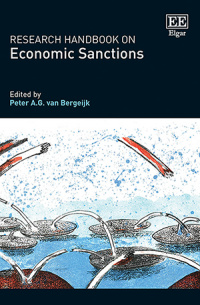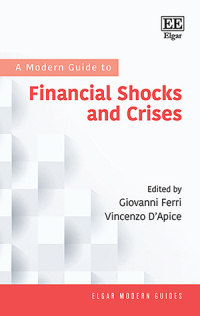Hardback
全球经济中的金融危机和衰退,第四版
4th edition
9781785361104 爱德华·埃尔加出版社
This new edition of Financial Crises and Recession in the Global Economy explores the major financial instabilities and evolutionary trends in the global economy since the 1970s. A learned but accessible book, it is perfect for a broad audience of academics and practitioners but has also been used as a supplementary textbook for courses in international economics, international finance, money and banking, and macroeconomics.
More Information
备受好评
Contents
More Information
This new edition of Financial Crises and Recession in the Global Economy explores the major financial instabilities and evolutionary trends in the global economy since the 1970s. Financial globalization has produced an expanded money-credit pyramid, increased the risk of crisis, and created and transferred wealth from periphery to core regions.
This book presents some new thinking, which explains the continuing occurrence of large-scale financial crises. Roy E. Allen examines how key financial variables are driven more by psychological and social constructs than is commonly understood and that money and wealth can be created, transferred and destroyed across the global economy independently of the rest of the ‘real’ economy. This new structural relationship between money and the real economy is associated with financial globalization—including, especially, new technologies and governmental deregulation in the ‘explosive 1980s’. A new political economy of financial crisis and a human ecology economics framework are advanced to guide research and policymaking in the future.
This learned but accessible book is meant for a broad audience of academics and practitioners, and has been used as a supplementary textbook for courses in international economics, international finance, money and banking, and macroeconomics.
This book presents some new thinking, which explains the continuing occurrence of large-scale financial crises. Roy E. Allen examines how key financial variables are driven more by psychological and social constructs than is commonly understood and that money and wealth can be created, transferred and destroyed across the global economy independently of the rest of the ‘real’ economy. This new structural relationship between money and the real economy is associated with financial globalization—including, especially, new technologies and governmental deregulation in the ‘explosive 1980s’. A new political economy of financial crisis and a human ecology economics framework are advanced to guide research and policymaking in the future.
This learned but accessible book is meant for a broad audience of academics and practitioners, and has been used as a supplementary textbook for courses in international economics, international finance, money and banking, and macroeconomics.
备受好评
第一版的好评;
‘在600本书中,我对全球经济的新观点进行了审查,这是传达最新信息的一本书,并且对各种最近的解释不令人满意的现象进行了合理的解释。这是唯一介绍全球经济体系的数据支持理论的书,该理论将现实世界经济与新的全球金融体系联系起来。’
- 肯尼思·瓦特(Kenneth E.F. Watt),人类生态百科全书
‘. . . the emphasis placed by the author on the international frame as the basic unit of economic analysis and his rejection of equilibrium as the principle informing that analysis make this book much more appropriate for understanding present-day reality than traditional macroeconomic treatises. Such a stance requires intellectual courage. Moreover, in its own terms, this work achieves the purposes it has set itself.’
- G. Carchedi,《国际政治经济学评论》
‘在600本书中,我对全球经济的新观点进行了审查,这是传达最新信息的一本书,并且对各种最近的解释不令人满意的现象进行了合理的解释。这是唯一介绍全球经济体系的数据支持理论的书,该理论将现实世界经济与新的全球金融体系联系起来。’
- 肯尼思·瓦特(Kenneth E.F. Watt),人类生态百科全书
‘. . . the emphasis placed by the author on the international frame as the basic unit of economic analysis and his rejection of equilibrium as the principle informing that analysis make this book much more appropriate for understanding present-day reality than traditional macroeconomic treatises. Such a stance requires intellectual courage. Moreover, in its own terms, this work achieves the purposes it has set itself.’
- G. Carchedi,《国际政治经济学评论》
Contents
Contents: Introduction 1. Financial Globalization Since the 1970s 2. Financial Instabilities and Trends in the 1980s 3. Financial Instabilities and Trends in the 1990s 4. The 2007- Crisis: Common Patterns and New Thinking 5. A Human Ecology Economics (HEE) Framework for the Analysis of Financial Instability Index





